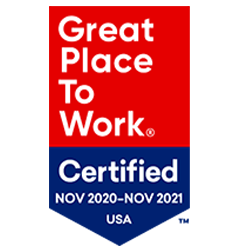Every crisis creates both immediate and longer-term, permanent changes. We are seeing the immediate impacts of the COVID-19 pandemic play out in isolation procedures, quarantines, distance learning, mass testing, and contact tracing. When the crisis passes, however, these changes will give way to long-term changes that may be harder to see right now but will nonetheless become part of the new way of working.
For Talent Acquisition, we are already experiencing significant changes that, for many companies, represent radical departures from their pre-pandemic ways of working. Remote recruiting staffs, online interviews, electronic background checks, virtual orientations, and new hires starting work remotely have been adapted nearly instantaneously by employers.
But after this pandemic passes, how many of these changes will remain permanent? What long-term impacts will the COVID-19 crisis have on TA? This is Part One of a two-part series that examines how TA will be impacted long-term by the COVID-19 crisis so that TA functions can begin to build a function that is not only effective now, but also ready to be effective in the future.
COVID-19 Shows That We Can Recruit from Anywhere
Before COVID-19, many organizations required recruiters to work on-site most or all of the week. With the crisis forcing all recruiters to work from home, organizations have learned something that’s been true for many years: recruiting can be done from anywhere. All you need is a good internet connection and a reliable cell signal.
Recruiters working from home will remain a permanent feature for most organizations. This will require recruiters and hiring managers to develop some new skill sets. Recruiters will need to develop different relationship-building skills as they deal with candidates and hiring managers in completely remote ways. Hiring managers will need to be retooled in not only the mechanics of conducting interviews via online platforms, but also in interview skills and assessment techniques, which present different challenges online compared to face-to-face.
Increased Reliance on Zoom-Style Interviews for First-Level Vetting
Some of the new communication channels businesses will become accustomed to post-COVID will be video platforms such as Zoom. Video interviews will become the new standard for how organizations initially connect with and screen candidates, replacing traditional phone interviews. This requires training recruiters and managers on how to conduct initial screening interviews via video platforms effectively and legally.
Sourcing Problems Shift to Selection Problems
Before the pandemic, unemployment was hovering at 50-year lows. As a result, the biggest problem facing recruiting functions in nearly all industries was finding enough qualified candidates to fill interviewing slates.
Now, with over 38 million people filing for unemployment since March, the main recruiting challenge has shifted for many companies from sourcing enough candidates to selecting the right candidates from suddenly swollen pools. Shifting from a sourcing-centric function to a selection-centric one may require simple changes such as retooling recruiting team members in selection skills. Or, it could require more significant changes, such as restructuring the function or even hiring recruiters with different skill sets.
These are a few of the changes we see on the horizon. For more, read Part Two of this article.




